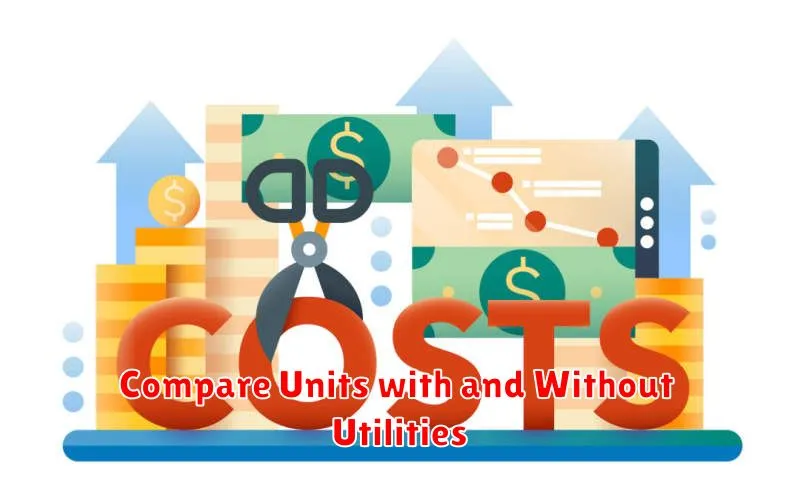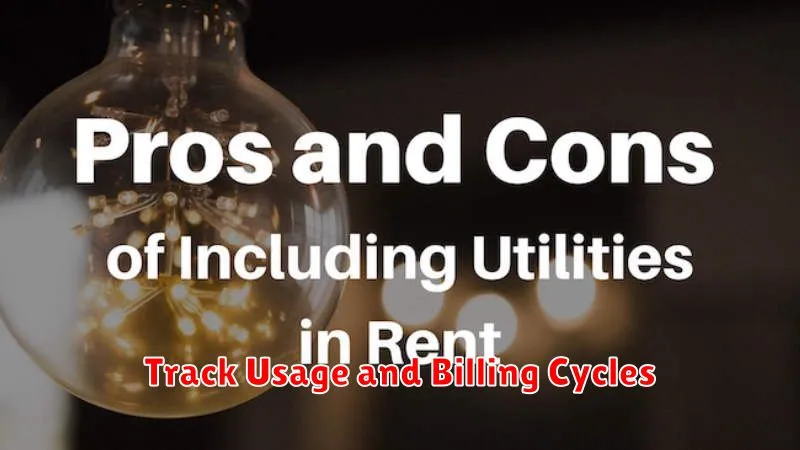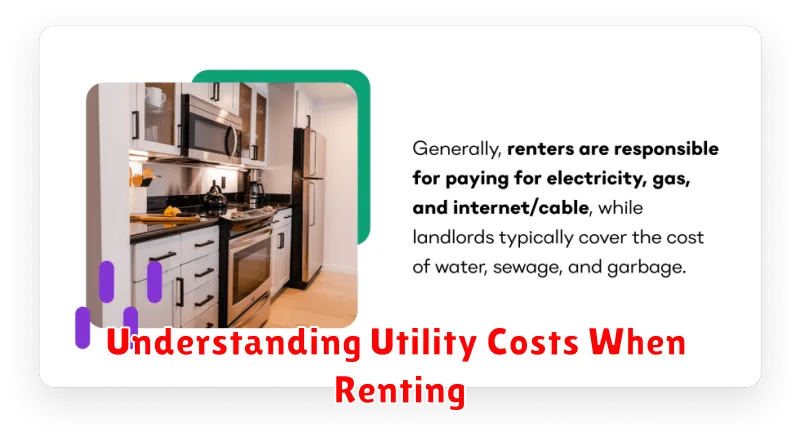Understanding utility costs is a crucial aspect of renting a property. Renters need to be aware of the potential expenses beyond the monthly rent payment. This includes costs for essential utilities such as electricity, gas, water, and sometimes even trash and sewer. Being prepared for these utility costs will help you budget effectively and avoid any financial surprises. This article will provide a comprehensive guide to understanding utility costs when renting, helping you make informed decisions and manage your expenses wisely.
Navigating the complexities of utility costs can be challenging for renters. From varying rates depending on usage to understanding different billing cycles, it’s important to be well-informed. This article aims to demystify utility costs when renting by providing practical tips and insights. We’ll explore the typical utility costs associated with renting, factors that influence these costs, and strategies for minimizing your expenses. By understanding how utilities are calculated and managed, you can confidently budget for your rental and make informed decisions about your consumption.
What Utilities Are Typically Included?
When renting a property, it’s crucial to understand which utilities are included in your rent and which you’ll be responsible for paying separately. Inclusion can vary significantly based on the lease agreement and the type of property.
Commonly included utilities are water, sewer, and trash removal. Sometimes, landlords also include heating and hot water, especially in older buildings or colder climates.
Less frequently included utilities are electricity, natural gas (for cooking or heating), and internet/cable. These are often the renter’s responsibility. Always clarify with your landlord or property manager exactly what is included to avoid any surprises.
Ask Before Signing the Lease
Before committing to a lease, it’s crucial to understand potential utility expenses. Inquiries about utility responsibilities should be a top priority. Don’t hesitate to ask which utilities are included in the rent and which you’ll be responsible for paying separately.
Common utilities include:
- Electricity
- Gas
- Water
- Sewer
- Trash removal
- Internet
- Cable
Clarifying these costs upfront prevents surprises and allows for accurate budgeting.
Average Monthly Utility Costs
Utility costs can vary significantly depending on location, apartment size, and personal usage. However, understanding the average costs can help you budget effectively. Electricity often represents the largest portion of utility expenses, followed by gas (for heating and cooking), water, and internet/cable. Other potential costs include trash removal and sewer services, which may be included in rent or billed separately.
While these costs can fluctuate, preparing for average expenses empowers renters to manage their finances proactively. Remember that averages are just estimates and actual costs may differ.
| Utility | Estimated Monthly Cost |
|---|---|
| Electricity | $50 – $150 |
| Gas | $20 – $75 |
| Water | $25 – $50 |
| Internet/Cable | $50 – $100 |
How to Estimate Utility Bills
Estimating utility costs is crucial when budgeting for a rental. While actual costs fluctuate, several methods can provide a reasonable projection.
Contact the utility providers directly. They often have historical usage data for the specific address, offering the most accurate estimate. If that’s not available, inquire about average costs for similar units in the area.
Online utility calculators can also be helpful. Inputting information about the property size, appliance types, and number of occupants can generate an estimated cost range.
Finally, speaking to current tenants, if possible, can offer valuable insights into real-world utility expenses for the property.
Compare Units with and Without Utilities

When searching for a rental, a key factor to consider is whether utilities are included in the rent. Comparing units with and without included utilities requires careful consideration of potential costs.
Units with utilities included offer a predictable monthly expense. You pay a fixed amount, simplifying budgeting. However, this can sometimes mean higher rent overall, potentially covering others’ higher usage.
Units without included utilities offer more control over your spending. You pay only for what you consume, incentivizing conservation. However, this requires setting up accounts with utility providers and fluctuating monthly bills.
Consider your lifestyle and budget. If you prioritize predictable expenses, a unit with included utilities might be preferable. If you prioritize control and potential cost savings, paying utilities separately could be a better option.
Tips to Reduce Your Bills
Managing utility costs is an important part of renting. Here are some practical tips to help you minimize your expenses:
Energy Conservation
Lower your thermostat during colder months and raise it during warmer months. Even a few degrees can make a difference. Unplug electronics and appliances when not in use to avoid phantom energy consumption. Maximize natural light by opening curtains during the day and use energy-efficient light bulbs.
Water Conservation
Be mindful of your water usage. Take shorter showers and fix any leaks promptly. Consider using low-flow showerheads and faucet aerators. Only run the washing machine and dishwasher when you have a full load.
Watch for Utility Scams
Be aware of utility scams targeting renters. Scammers may pose as utility company representatives threatening disconnection if immediate payment isn’t made. They often demand payment via prepaid debit cards or wire transfers, which are difficult to trace.
Never give out personal or financial information over the phone unless you initiated the call. If you are unsure about the legitimacy of a call, hang up and contact your utility company directly using the number on your bill or their official website.
Common scam tactics include high-pressure tactics, threats of immediate disconnection, and requests for unusual payment methods. Report any suspicious activity to your utility provider and local law enforcement.
Shared Utilities in Multi-Tenant Units
In multi-tenant buildings, some utilities are often shared among residents. This typically includes water and trash removal. The cost for these shared services is usually incorporated into the rent or billed separately as a fixed fee or based on usage, depending on the lease agreement.
Understanding how shared utilities are handled is crucial when comparing rental properties. Be sure to clarify whether these costs are included in the advertised rent to accurately assess the total cost of living.
Other utilities, like electricity and gas, are typically individually metered, allowing residents to control their usage and costs. However, in some older buildings, these may also be shared, which necessitates clear agreements between tenants regarding payment responsibility.
Who to Contact for Setup
Setting up utilities involves contacting the specific utility providers for each service. This typically includes electricity, gas, water, and sometimes trash/recycling and internet/cable.
Your landlord or property manager is the best initial point of contact. They can provide a list of the utility companies servicing the property and inform you which utilities are your responsibility. They may also have established procedures or preferred providers.
If you are unsure, contact the local municipality or government office for your area. They can provide information on the utility providers in your region.
Track Usage and Billing Cycles

Monitoring your utility consumption is crucial for managing your rental budget. Understanding your billing cycles helps you anticipate costs and avoid surprises.
Keep records of your monthly usage for utilities like electricity, gas, and water. This can help you identify trends and potential areas for conservation.
Note the billing cycle dates for each utility. Billing cycles can vary, so knowing the start and end dates helps you accurately attribute costs to the correct period.

